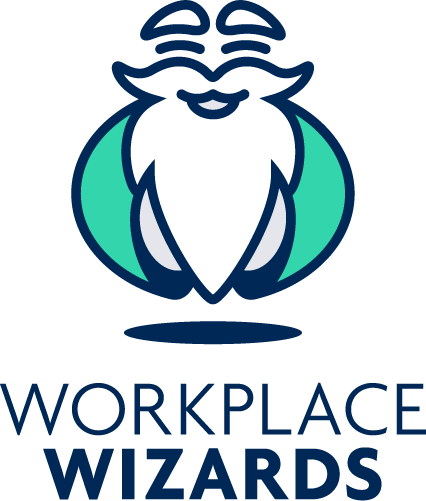Quick Summary
As a business owner, we understand if the recent decision of WorkPac Pty Ltd v Rossato [2020] FCAFC 84 (“the 2020 WorkPac decision”) has caused some confusion about whether you’d have to provide paid leave entitlements to your casuals.
The 2020 WorkPac decision confirmed an employee may be considered ‘permanent’ (and entitled to paid leave), if their employment arrangement is in ‘substance’ that of a permanent employee, despite the ‘casual’ label within their employment contract.
What is the difference between Casual and Permanent employment?
Casual employment is typically informal and irregular. In the strictest sense, casuals are engaged when and for as long as work is available. Employment technically starts and ends with every shift and if there is no longer any need for them to work, employers may reduce their hours and not provide them further shifts.
Casual employees do not ordinarily have paid leave entitlements. Instead, casual employees are entitled to a higher hourly rate (i.e. their regular rate plus ‘casual loading’).
On the other hand, permanent employment is typically planned and has set hours. The employer can require the employee to work their arranged hours, and if an employee cannot attend, they must arrange to take paid or unpaid leave. Permanent employees are not entitled to ‘casual loading’, however, accrue entitlements to paid leave including annual, personal and compassionate leave.
What happened in the 2020 WorkPac case?
Background
WorkPac, a labour-hire company, had engaged Mr Rossato as an employee from 2014-2018, through a series of contracts for assignments. The first three contracts had estimated lengths of the assignment varying from 6 months to 154 days in length. The final three contracts did not contain a length of assignment, but instead, stated that Mr Rossato was engaged on a ‘casual assignment’, and accordingly could refuse and cancel shifts.
For each of these assignments, WorkPac hired Mr Rossato to Glencore Australia Pty Ltd to work within their mine sites.
Mr Rossato claimed that despite his ‘casual assignment’ classification within the final three assignment contracts, he was a permanent employee of Workpac, and accordingly, WorkPac should provide him paid leave, including annual, personal and compassionate leave.
Was Mr Rossato a ‘casual’ or ‘permanent’ employee?
The Court, following previous precedent, looked to the ‘substance’ of the working arrangement, and not just the ‘casual’ label to determine whether Mr Rossato was casual or permanent.
When looking at the ‘substance’ the court will consider:
- Is the employment regular and stable or intermittent, irregular and informal?
- Could the employee elect whether or not to work?
- Is employee employed ‘by the hour’?
- How is the employee’s position described?
- Does actual arrangement look permanent considering the circumstance?
- Did the employment nature change after the start of the employment?
Applying these factors to Mr Rossato’s situation, the court found he was a permanent employee. Some of the main considerations were:
- Mr Rossato’s contract stated that he would work according to Glencore’s roster and Glencore would provide Mr Rossato regular shifts, scheduled up to a year in advance;
- The employment contract included penalties and disciplinary action for refusal of shifts;
- During the shifts, Glencore provided Mr Rossato with free accommodation – meaning it would be unlikely Mr Rossato could then choose to accept and reject shifts; and
- At the mine sites, Mr Rossato worked alongside permanent employees (as well as other labour hires).
The Outcome
As a result of the above finding, the court ordered WorkPac to pay Mr Rossato’s entitlements as a permanent employee.
In requiring WorkPac to pay Mr Rossato his entitlements, the court found that Mr Rossato was entitled to the additional leave entitlements even though he was receiving a casually loaded rate.
What does this mean for you?
Although no new law has been made in the the 2020 WorkPac decision, it reminds casual employees that they could claim to be ‘permanent’ if the nature of their work is more similar to that of a permanent employee.
Accordingly, as an employer, we recommend you risk manage to ensure that you are correctly classifying your casual employees – especially those that you have nominated as ‘systematic and regular’ to qualify for JobKeeper.
Based on the 2020 WorkPac judgement, we suggest that you:
- Review casual arrangements and casual contracts.
- Ask yourself, are these employees actually casual? Or, am I hiring and treating them instead like permanent employees?
- Ensure the contract terms state that they are ‘casual’, and that they have ‘no expectation ongoing work’
- Ensure that ‘casual loading’ is itemised within the contract i.e. specifically state their base rate and their casual loading amount separately
- Review rostering arrangements –
- Remember that casuals should be able to accept and reject shifts
- Where possible, keep your roster to fortnightly or monthly (depending on other obligations you may have to your employees such as within an enterprise agreement)
- Do not guarantee or promise or create a strong expectation of ongoing consistent hours to employees
- Avoid stipulating set hours within the contract as you would with permanent employees
- Ensure casual employees are receiving all their due entitlements.
- If you are unsure what these are, see our free ‘how-to’ guide here.
If you have any further questions on engaging casual employees, Just call Workplace Wiizards on 03 9087 6949 (or email at support@workplacewizards.com.au)



0 Comments Leave a comment